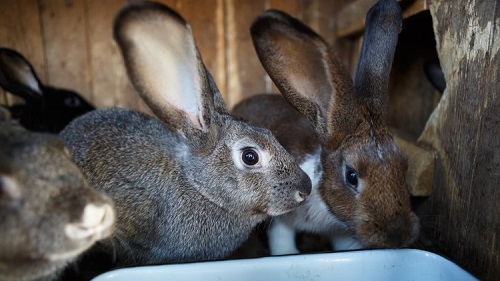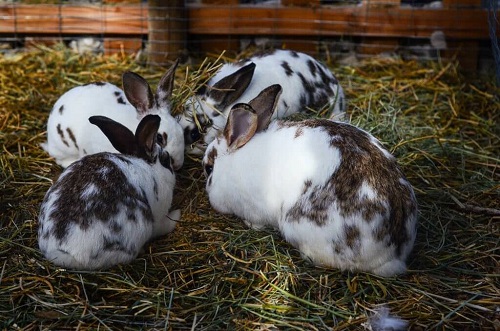Before you begin rabbit raising you will need to answer a few questions first. How many rabbits are you going to keep? Are you raising them for your own dinner table? Is your goal to build a profitable rabbit business? Once these questions are answered you can proceed with making your rabbit plan.
If you want to raise meat for profit, rabbit raising is much cheaper, more efficient, and more productive than raising chickens. However, raising rabbits for commercial purposes will only make you a full-time income if you are raising hundreds of fryers. You can certainly make money raising fewer, but your income will also decrease.
Raising a small number of rabbits to supply meat for your family can be fun and relaxing. Plus, you’ll have the added benefit of eating delicious and nutritious meat that is higher in quality than chicken, beef, or pork. Just a few rabbits can produce all the meat a family will need.
Rabbits can produce large amounts of delicious meat in very confined spaces. Although you can feed rabbits many things they must be fed protein to produce protein. With minimal time, space, and financial requirements, raising rabbits is a great introduction to homesteading or a simple way to make a little extra money. They are one of the easiest animals to keep. They are very healthy, clean, and quiet animals. And you can start raising rabbits with a very low investment.
Rabbits will reach market weight at about 8 weeks of age. And since they are usually weaned from their mother at about 6 to 8 weeks of age, very little feed or care if any, is needed to raise them to butchering age. In addition to meat they can be raised for many other products, with the most valuable being fur. If tanned correctly they will also provide a wonderful amount of warmth to gloves, hats, and linings.
Rabbits need a clean dry environment that protects them from the weather if you expect them to thrive. Rabbits should always have access to fresh water. Rabbits will not eat if they do not have water. Rabbits need a lot of water for their size so each one will need his own bottle which should be disinfected occasionally. Rabbits need a lot of fresh air and sunlight. Rabbits can also be kept indoors in cages. They naturally do not have an odor and are very clean and quiet.
Rabbits are quiet animals and easily frightened so their hutches should be in a quiet area. Rabbits cannot tolerate temperatures over 90 degrees Fahrenheit and can very easily perish due to heat stroke. Rabbits often enjoy sitting in the sun, but they must always be able to get out of the direct rays of the sun. Rabbits are ideally kept where the temperature can be maintained at 62 degrees Fahrenheit.
Rabbits are prey to many other animals so they need to be protected. Make sure you keep their cages up off the ground and ensure they are sturdy enough to protect them from dogs, coyotes, and other threats.
If you are in the business of raising rabbits it’s very important to keep a detailed rabbit plan, or production schedule. Knowing when breeding has occurred for particular animals, each litter’s age, how productive each doe is, and other elements are important to keep track of.
It is best for the beginner to start with just a few rabbits and rabbit hutches. Once they get a feel for keeping these animals they can then decide if raising them for profit is something they would like to try. It’s certainly doable, but you don’t want to get in too deep until you have some experience under your belt. Once you have gained enough knowledge you can then take the next step in your rabbit plan.



